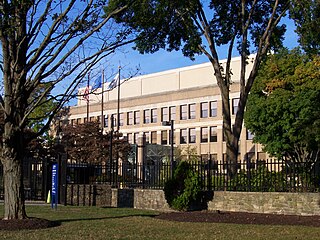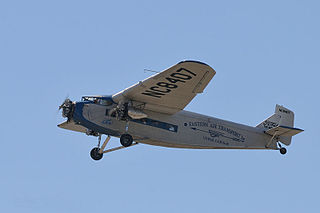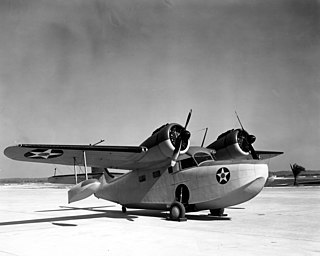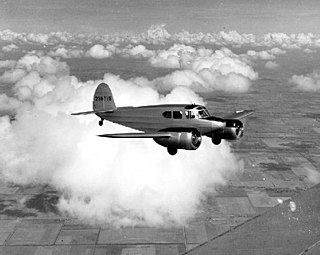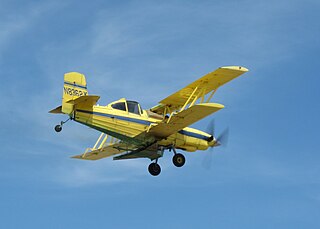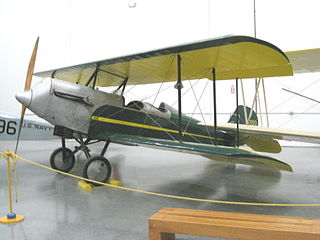Frakes Aviation was founded by J. Fred Frakes in the late 1960s, and is located in Cleburne, Texas, United States. When founded, the company's main activity was converting radial engine powered airplanes to gas turbine engines. The company continued operations in this area of aviation into the mid-1980s, converting various airplanes.

Cleburne is a city in and the county seat of Johnson County, Texas, United States. As of the 2010 census the population was 29,337. The city is named in honor of Patrick Cleburne, a Confederate general. Lake Pat Cleburne, the reservoir that provides water to the city and surrounding area, is also named after him.

The radial engine is a reciprocating type internal combustion engine configuration in which the cylinders "radiate" outward from a central crankcase like the spokes of a wheel. It resembles a stylized star when viewed from the front, and is called a "star engine" in some languages. The radial configuration was commonly used for aircraft engines before gas turbine engines became predominant.

A gas turbine, also called a combustion turbine, is a type of continuous combustion, internal combustion engine. There are three main components:
- An upstream rotating gas compressor;
- A downstream turbine on the same shaft;
- A combustion chamber or area, called a combustor, in between 1. and 2. above.
Frakes' most significant projects were the re-engineering of two Grumman products, the Ag-Cat and the Mallard, in both cases replacing the original radial piston engines with the Pratt & Whitney Canada PT6A.

The Grumman Aircraft Engineering Corporation, later Grumman Aerospace Corporation, was a leading 20th century U.S. producer of military and civilian aircraft. Founded on December 6, 1929, by Leroy Grumman and partners, it merged in 1994 with Northrop Corporation to form Northrop Grumman.
The company also converted a number of Aerospatiale Nord 262 airplanes for Mohawk Airlines (later used by Ransome Airlines, an Allegheny Commuter subsidiary airline) in the late 1970s. After long usage by Ransome Airlines at least two of these airplanes were exported to Australia where they were used for a short time before being retired.

The Aérospatiale N 262 is a French twin-turboprop high-wing airliner built first by Nord Aviation. The aircraft was also known as the Nord 262.
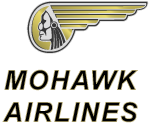
Mohawk Airlines was a regional passenger airline operating in the Mid-Atlantic region of the United States, mainly in New York and Pennsylvania, from the mid-1940s until its acquisition by Allegheny Airlines in 1972. At its height, it employed over 2,200 personnel and pioneered several aspects of regional airline operations, including being the first airline in the United States to hire an African American flight attendant in 1958. The airline was based at Ithaca Municipal Airport near Ithaca, New York until 1958, when it moved to Oneida County Airport in Whitestown, New York.
Ransome Airlines was a regional airline from the United States, headquartered at Northeast Philadelphia Airport near Philadelphia, Pennsylvania. Founded in 1967, it operated feeder flights on behalf of different mainline carriers via specific airline brands for most of its existence: as Allegheny Commuter (1970-1982), Delta Connection (1984-1987), Pan Am Express (1987-1991) and finally Trans World Express (1991-1995).
In the mid-1980s Frakes Aviation saw a need to diversify their business and ventured into aftermarket exhaust systems for PT6 powered aircraft. As the modification business dwindled the exhaust business began to take hold. Frakes Aviation now holds various supplemental type certificates for exhaust systems on several different airframes.

An exhaust system is usually piping used to guide reaction exhaust gases away from a controlled combustion inside an engine or stove. The entire system conveys burnt gases from the engine and includes one or more exhaust pipes. Depending on the overall system design, the exhaust gas may flow through one or more of:

The airframe of an aircraft is its mechanical structure. It is typically considered to include fuselage, wings and undercarriage and exclude the propulsion system. Airframe design is a field of aerospace engineering that combines aerodynamics, materials technology and manufacturing methods to achieve balances of performance, reliability and cost.
Further diversifying of their business brought them into the OEM market. Frakes Aviation is now the OEM for exhaust stacks on various newly built aircraft, including the Quest Kodiak and the Epic Dynasty.

The Quest Kodiak is an American utility aircraft built by Quest Aircraft. The high-wing, unpressurized, single-engine turboprop has a fixed tricycle landing gear and is suitable for STOL operations from unimproved airfields.
